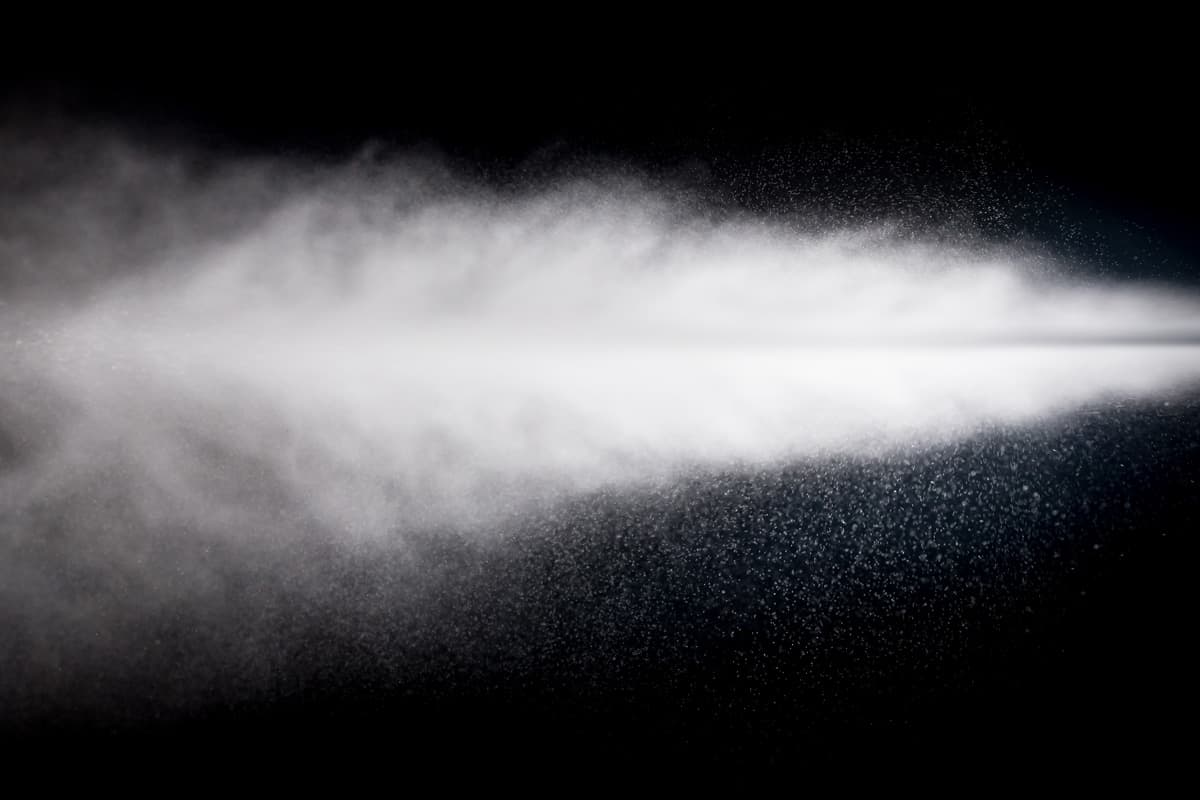Are you a homeowner concerned about whether your home's water pressure is too high or low? Or do you wonder how to adjust the water pressure? These are essential questions to address.
We've researched these topics and are glad to share well-researched information with you!
Residential water pressure is an essential aspect of maintaining a fully functional house.
For the best results, strive to keep your water pressure within the normal range of 40 to 60 PSI. 50 PSI is considered the factory setting for pressure reduction valves.
Are you ready to learn how residential water pressure works? Or how to adjust it correctly? Great! We've researched these topics and have gathered quality research results to share with you!
Home Water Pressure: Everything a homeowner should know!
Water pressure is vital for maintaining your home's plumbing and connected appliances without issues. To check your water pressure, you will need a water pressure gauge.
What should a home water pressure be?
The normal range for water pressure is 40 to 60 PSI. However, 50 PSI is often the factory setting for most water pressure regulators.
What is considered low water pressure?
40 PSI or lower is considered low water pressure. Sometimes low water pressure is triggered by several water outputs requiring water simultaneously. Or, if you are connecting to a municipal water line, there could be an issue in your area.
If issues with low water pressure have happened recently, talk to your neighbors to see if they are having similar water pressure problems. Visit your municipal website and inquire about any water flow problems in your neighborhood.
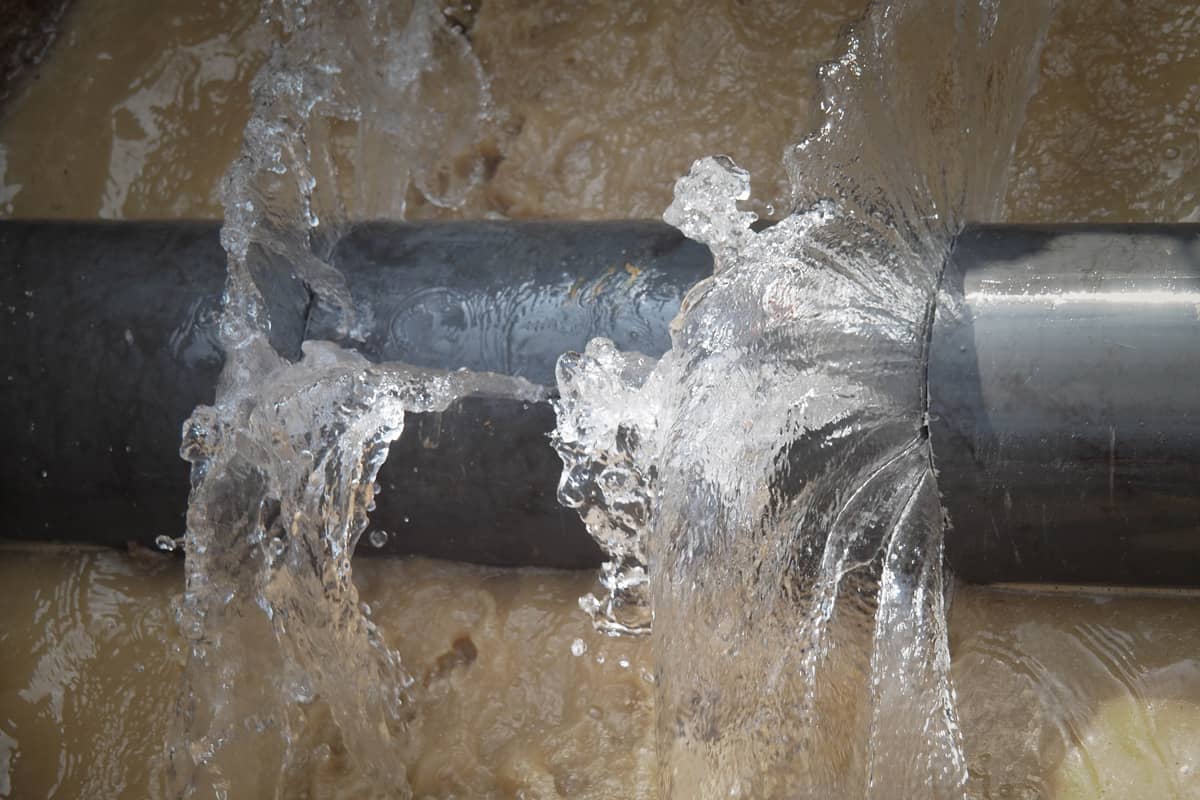
What is considered high water pressure?
Generally, any PSI reading of 50 or higher is considered high water pressure and should never exceed 75 PSI.
Click here to view a water pressure gauge at Amazon.
What happens if the water pressure is too high in your house?
Several issues will occur from prolonged high-pressure water in residential homes.
- Damage to the pipes and plumbing from the increased force from the water pressure, which over time will cause small leaks in the pipes. Those leaks could lead to lines breaking or exploding from small leaks and aggressively high water flow.
- Higher water bills due to more water than necessary being used for daily tasks.
- Damages to the water heater will occur easily because water will expand when heated. Most water heaters are manufactured with thermal expansion tanks that will provide space for the expanded water. Suppose the PSI is 75 or higher. The water heater's expansion tank could overfill quickly, triggering a water heater failure.
- The effects of prolonged high water pressure will cause unnecessary wear and tear on your appliances. Especially the dishwasher and washing machine, because the increased water pressure will damage the internal components.
- Faucets and shower heads will drip and leak more from the pressure in the plumbing, contributing to higher water bills over time.
- The toilets will often run even if they haven't been flushed in hours due to pressurized plumbing systems. Not only will this issue wastewater, but it will also cause the toilets to require replacement sooner from overuse.
Suppose you have noticed a few of these issues in your home. It is quite likely your water pressure is too high and will need to be adjusted as soon as possible to avoid future damages and expensive water bills.
Suppose you have a well pump and wonder how to maintain consistent water pressure in your home. Click here to read Constant Pressure Well Pump: Pros And Cons
What happens if the water pressure is too low in your house?
When the water pressure is too low, you will notice that water runs slowly from faucets and shower heads, the toilet doesn't flush with much vigor, and the washing machine will take considerable time to fill.
All of these issues can be annoying, especially in a busy household.
To determine if your water pressure is too low. You must use a water pressure gauge to discover the exact PSI.
What causes low water pressure?
Several issues will result in low water pressure throughout the house.
- Sometimes low water pressure is caused by partially closed shut-off valves. To remedy this issue, ensure that the valves are opened further or all the way.
- Leaking pipes will significantly impact water flow and slow it down considerably.
- Suppose you are only noticing pressure issues with one faucet or shower head. Clogged faucets and shower heads could cause this issue. Remove the filter and clean it with a scrub brush to remove the debris that may have caused the low water pressure.
- Double-check the pressure reduction valve and ensure it's at 50 PSI. If it is set at 40 or lower, that will indicate the pressure reduction was the cause of the low water pressure issues.
How to adjust water pressure?
You can change the PSI setting by adjusting the pressure reduction valve, which is typically located on the main water valve.
Before you modify the PSI, be sure to test the water pressure first. Turn the pressure reduction valve's knob to the left or right to adjust the PSI.
How to increase or improve water pressure
Suppose you have tested the PSI and it is at 32, then adjust the pressure reduction valve to at least 40 PSI. Or, if high water pressure is the issue and your PSI is 64, turn the pressure reduction valve to 50 or lower.
When deciphering PSI and making adjustments, remember that 50 PSI is the factory setting and the go-to recommended by professional plumbers.
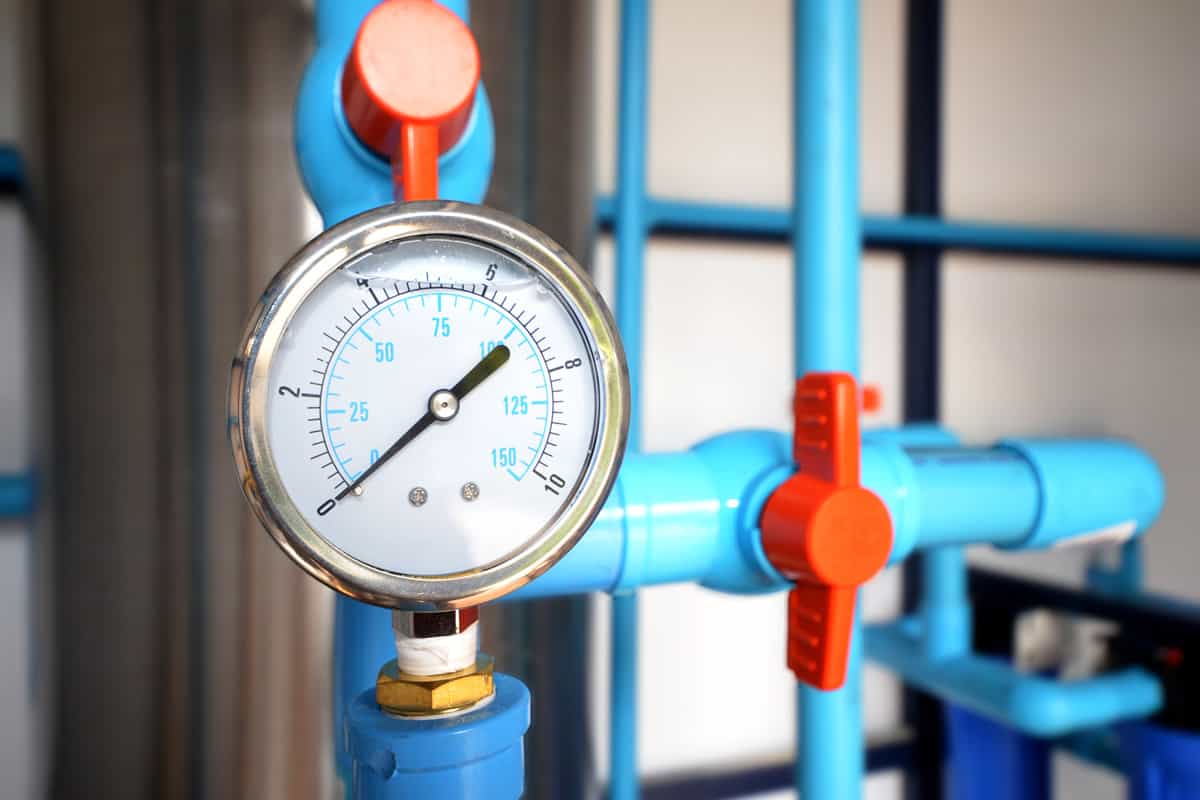
How to check the water pressure?
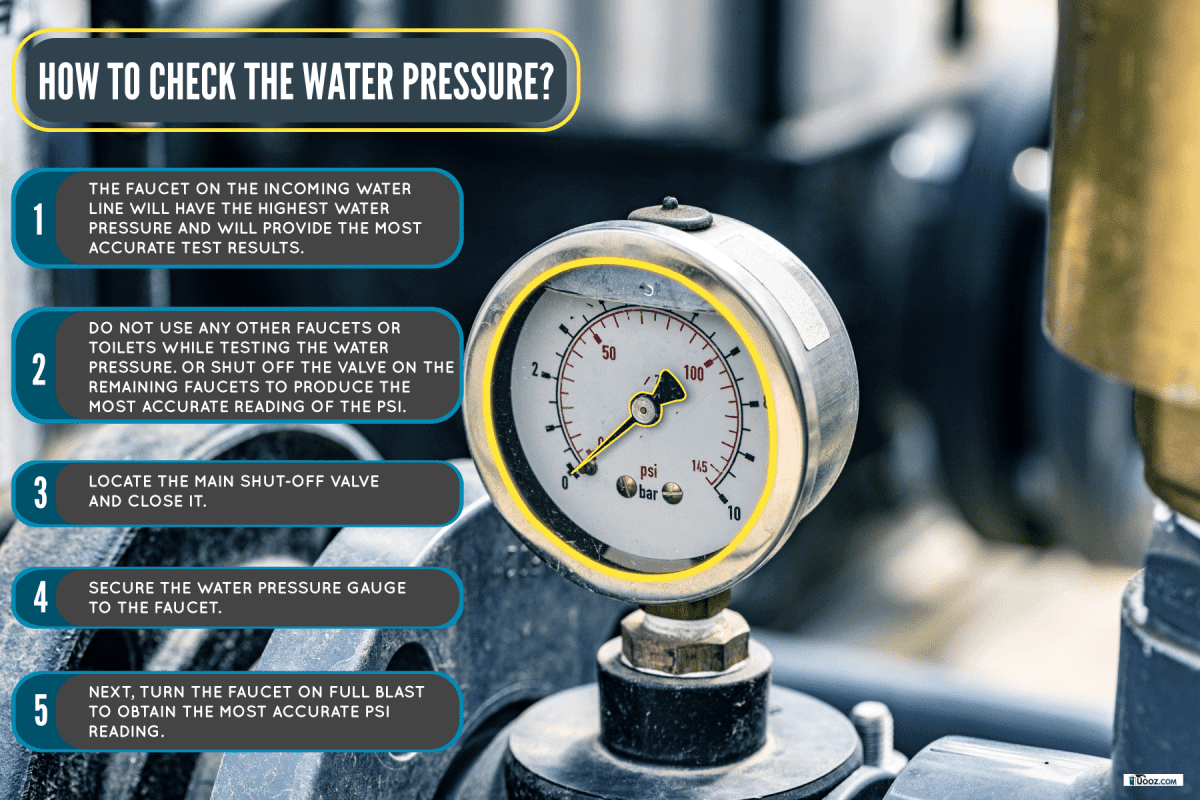
Measuringwater pressure from the municipal waterline is relatively easy and only requires one tool. The handy water pressure gauge was mentioned earlier in this article.
Follow the steps below to test your PSI and determine if your water pressure is too low or high.
- The faucet on the incoming water line will have the highest water pressure and will provide the most accurate test results.
- Do not use any other faucets or toilets while testing the water pressure. Or shut off the valve on the remaining faucets to produce the most accurate reading of the PSI.
- Locate the main shut-off valve and close it.
- Secure the water pressure gauge to the faucet.
- Next, turn the faucet on full blast to obtain the most accurate PSI reading.
Please note that these steps can be applied to any faucet in your home once the initial PSI has been determined. Also, this method is suitable for locating leaks in the plumbing system.
In closing
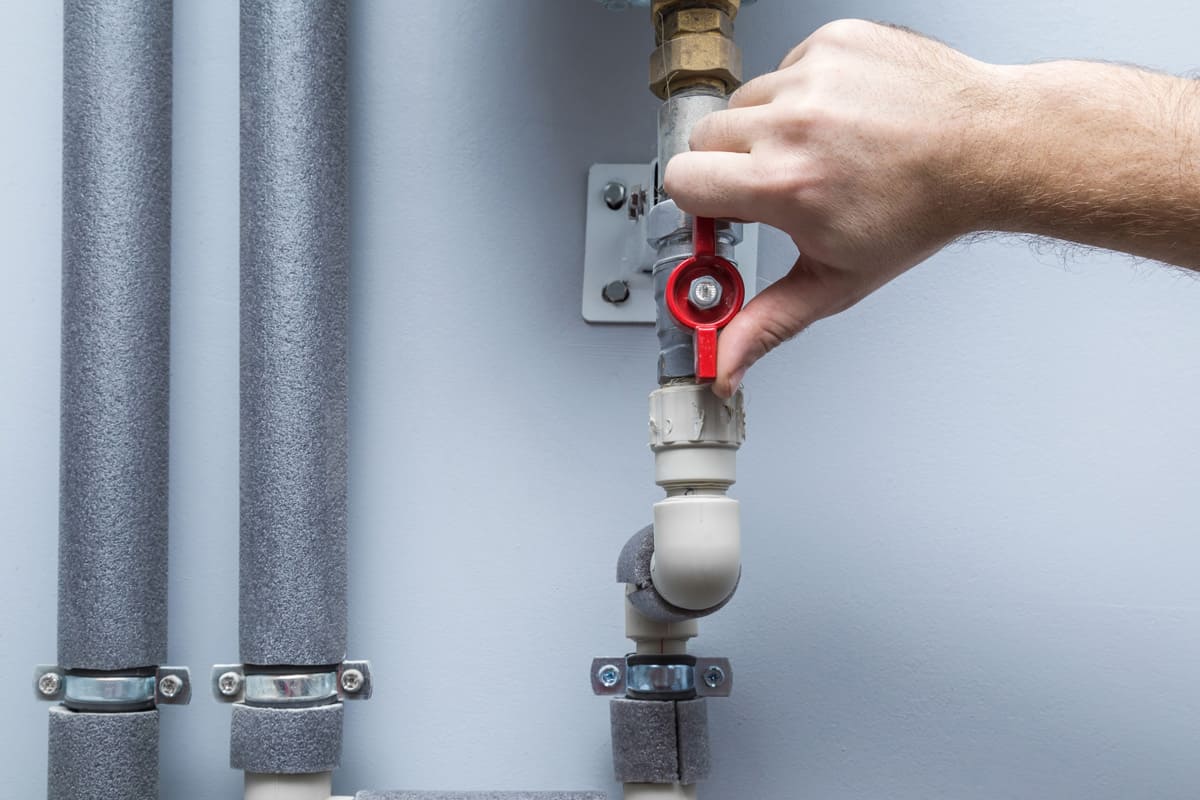
The team at Uooz would like to thank you for taking time out of your busy day to read our article!
Today we discussed water pressure, what is ideal for a residential home, and what issues high or low water pressure will cause in your house. Also, we discussed how to achieve normal water pressure and measure PSI correctly.
Please check out these articles to assist you with your responsibilities as a homeowner!
6 Types of Ceiling Cracks Homeowners Should Know
Can PEX Pipes Freeze And Burst? What homeowners need to know
How Much Does It Cost To Insulate A 1,500 Square Foot House?


